Texans may need to brace themselves for a change of scenery during wildflower season.
Bastard cabbage, an invasive annual, has taken up residence throughout the state. The plant is dominating our river bottoms and peppering trails. Some highway intersections look like Bastard Cabbage Central–masses of yellow, three-foot high flowers.
This feisty interloper is most content in cool temperatures and disturbed soils. Among the first plants to emerge in Spring, it gets a head start on consuming available sunshine, soil nutrients and moisture. It grows up to five feet in height, throwing shade on later seedlings.
And while several butterflies host on its mustardy foliage, pollinators nectar on its blossoms, and the plant is tasty to eat, the fact remains that Bastard cabbage is ousting native wildflowers.
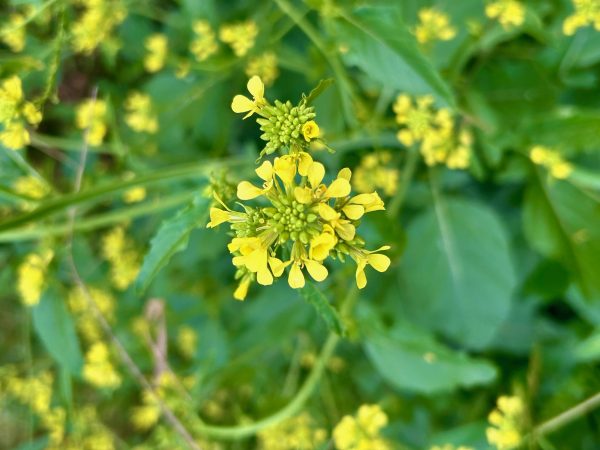
Don’t be fooled. Aptly named Bastard cabbage is displacing native plants. –Photo by Monika Maeckle
“Learn to love them,” Tom Kinsey, a former staff naturalist at the Witte Museum and nature educator at Learn Nature, wrote recently on Facebook, “because they’re just about eliminating our native Texas wildflowers.”
Is it possible that wildflower lovers will soon be snapping pictures of their pooches in fields of Bastard cabbage rather than bluebonnets?
“That is absolutely the concern,” said Peter Pierson, natural resource management specialist at the San Antonio River Authority (SARA). “That’s why it’s being noted so much–because it IS displacing our native wildflowers.”
Pierson said aptly named Bastard cabbage, Rapistrum rugosum. is ubiquitous throughout the state and that we all need to be concerned about it. The plant is creating monocultures of yellow flowers that look like broccoli–especially after wet winters.
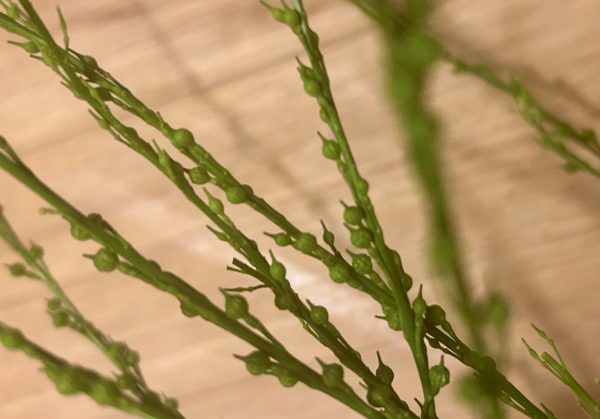
Each stems holds multiple fruits which contain two or more seeds. –Photo by Monika Maeckle
A recent walk along San Antonio’s Mission Reach and Eagleland extension of SARA’s $384 million riparian restoration along the San Antonio River revealed large stands of Bastard cabbage. The trails, which are more frequently mowed, had fewer of the surly mustards, but each plant carries hundreds of seeds and will replant itself if left intact.
Pierson blamed limited resources for the massive spread of Bastard cabbage along the Mission Reach.
“We can’t get everywhere at once. We try to keep it mowed down and pulled out, but it grows so quickly and puts out such a big rosette so early….It’s a challenge.”
Kelly Lyons, a biology professor at Trinity University who has been studying invasive plants for more than two decades, has made the case that Bastard cabbage is being spread by climate change combined with profit driven seed companies that are promoting annual Mediterranean grasses like annual rye grass and wild oats.
Lyons contends that seeds for these invasive grasses from the Mediterranean are imported from the west coast and often contain contaminants such as Bastard cabbage and yellow star thistle. She said instead, we should be investing in native seed.
“The more we buy Texas native seed, the faster we grow that potentially profitable industry locally,” she said.
The banner Bastard cabbage crop this year reflects last summer’s drought, which killed off many of our grasses and perennial plants, followed by a wet winter.
“Left unmitigated, each year we might be seeing more and more Bastard cabbage,” said Sophie Lemkin, horticulturist for the Lady Bird Johnson Wildflower Center in Austin.
Land managers suggest volunteers help by cutting the heads off Bastard cabbage and disposing of it, preferably in the trash. While the seeds inside the tiny fruits are generally not viable until they turn brown, better to play it safe and not return them to the earth.
“Anything that keeps them from reseeding helps,” said Pierson. “Now is the time. The more we can mow it down, the better.”
Lemkin, like Lyons, recommended sowing with native grasses and herbaceous ground covers as a good strategy for mitigating the spread of Bastard cabbage.
Another option: eat it.
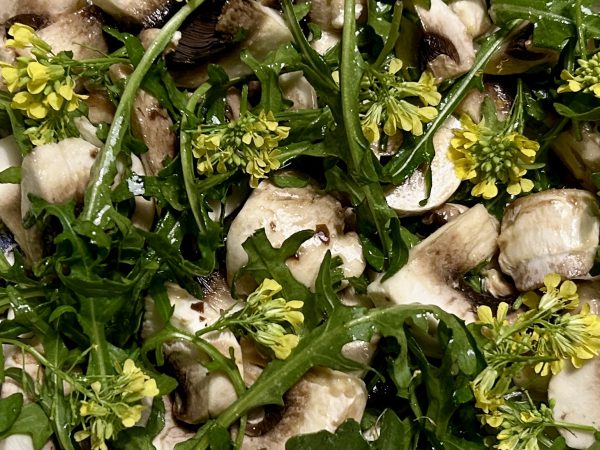
Mushroom, arugula and Bastard cabbage flower salad. Yum. –Photo by Monika Maeckle
Foragers and adventurous eaters have been harvesting and consuming Bastard cabbage for years.
Mark “Merriweather” Vorderbruggen, author of several books on foraging as well as caretaker/founder of the popular Foraging Texas website, suggests the following:
“How do I eat this invasive species? The flowers and green seedpods I like raw straight off the plant or added to salads. The broccoli-like flower buds are also eaten raw or cooked like broccoli florets (drizzled with cheese!). The younger, tender leaves are cooked like turnip/collard greens, sautéing them with some garlic and bacon. The younger, tender parts of the stem do well when cooked/steamed like asparagus. I have yet to experiment with the roots but suspect a low-grade ‘horseradish’ sauce could be made from them.”
Lemkin said she likes to eat the flowers as a snack along the trail. “I’ve also taken the buds home and sautéed them with a little olive, salt and pepper as a good broccoli replacement, and the leaves go great in a sandwich.”
I’ve been experimenting with Bastard cabbage in my own kitchen. The fresh flowers make a lovely addition to salads, fresh off the stem. You can also sauté the stems, leaves, flowers and fruits with oil, butter or bacon. Add some onions and cheese and you have an excellent side dish.
Elizabeth Johnson at Pharm Table in San Antonio suggests treating Bastard cabbage like collard greens.
“Sauté the leaves in avocado oil with a handful of blueberries. Garnish with. maple syrup, avocado, pepitas and toasted coconut,” said Johnson, adding she calls this “Blueberry collard bowl.”
Johnson said she also uses the flowers as a garnish on soups.
Have some Bastard cabbage recipes? Please share in the comments.
And don’t be shy about harvesting Bastard cabbage. As Pierson said, “Every little bit we get rid of helps.”
TOP PHOTO: Cacteye Rivard sits in a field of Bastard cabbage in San Antonio’s Olmos Basin Park.– Photo by Monika Maeckle
Related posts:
- Monarch butterflies heading our way as wildflower bounty awaits
- No monarchs yet, but Red Admirals fluttering through Texas
- Clammyweed named 2024 Pollinator Plant of the Year
- Pollinatives, San Antonio’s second native plant nursery, results from couple’s retirement “deal”
- Mostly native urban pollinator garden outperforms lawn every time
- Flower “bed” works overtime as bachelor pad for solitary bees
- Trinational friendship garden woos pollinators and their fans to Confluence Park
- Doug Tallamy proposes crowdsourcing a homegrown national park: Who’s in?
- How to plan a successful butterfly and pollinator garden
- Mostly native butterfly garden outperforms lawn every time
- A year in the life of an urban butterfly gardenDowntown River walk plot converts to pollinator garden, creature haven
Like what you’re reading? Don’t miss a single article from the Texas Butterfly Ranch. Sign up for email delivery at the bottom of this page, like us on Facebook, follow us on Twitter, @monikam or on Instagram.

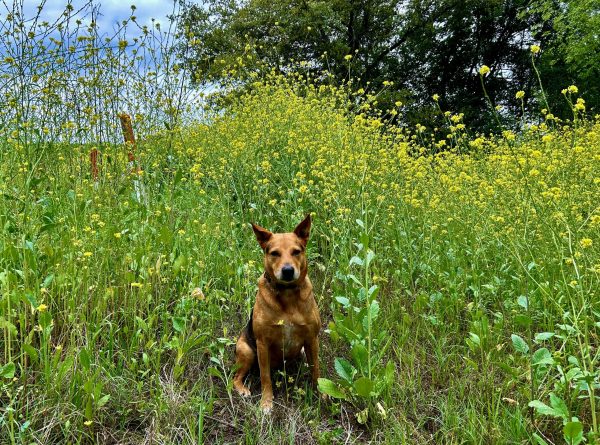
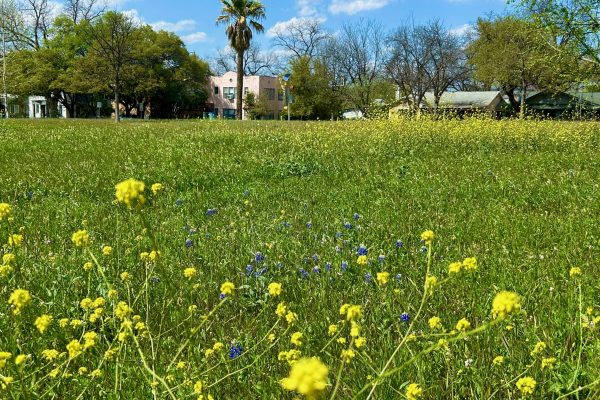
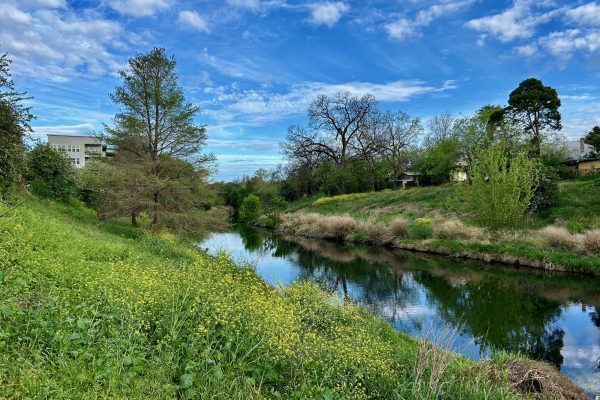
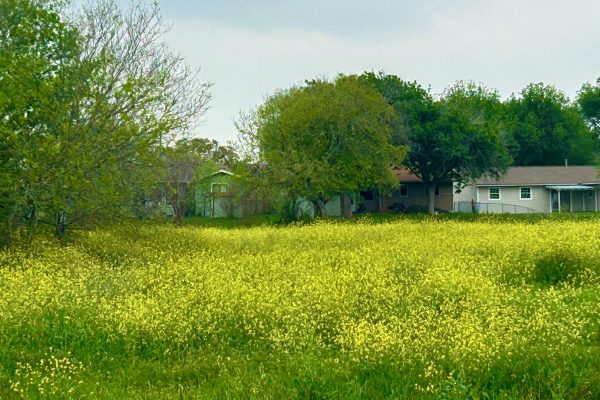
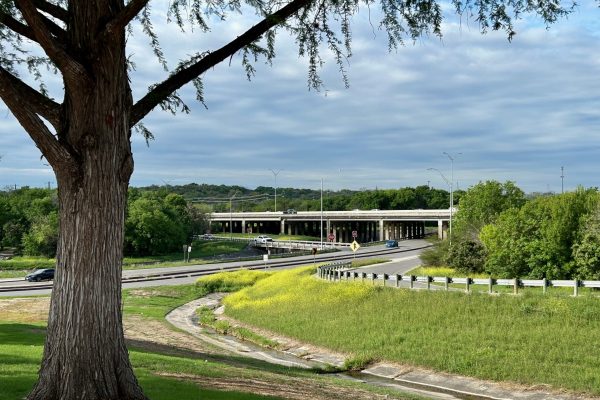
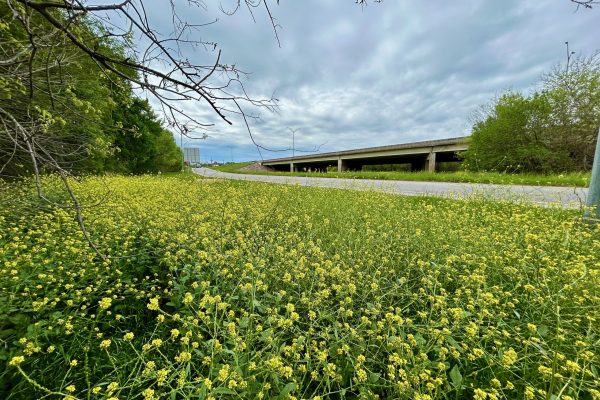
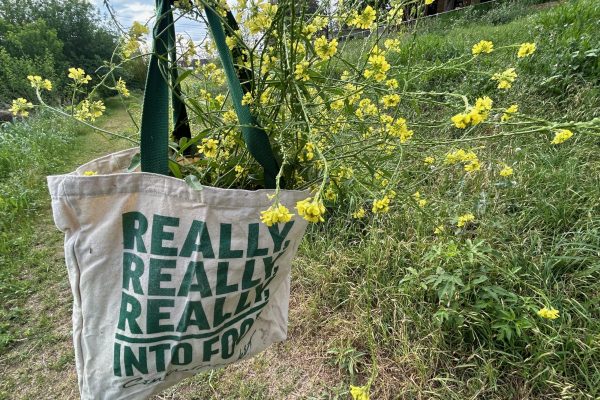
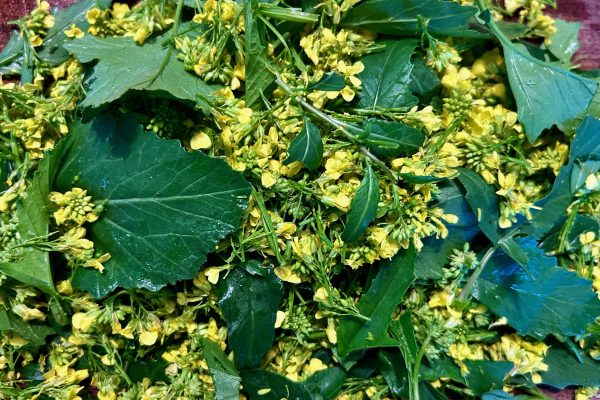
Always so interesting.
Monika, bless your heart for so faithfully providing these columns and so much resource material. 😊🌷Meg from Massachusetts
[…] If it shows up on your property, dig it up right away, before it goes to seed. I fear that we will one day lose our iconic wildflower vistas if bastard cabbage is allowed to continue to […]
[…] If it shows up on your property, dig it up right away, before it goes to seed. I fear that we will one day lose our iconic wildflower vistas if bastard cabbage is allowed to continue to […]
[…] it reveals up in your property, dig it up straight away, earlier than it goes to seed. I worry that we are going to someday lose our iconic wildflower vistas if bastard cabbage is allowed to proceed to […]
[…] it exhibits up in your property, dig it up instantly, earlier than it goes to seed. I concern that we will one day lose our iconic wildflower vistas if bastard cabbage is allowed to proceed to […]
I pull up as many of them as possible, before flowering. If any escape, I get the flowers, then mow or pull out